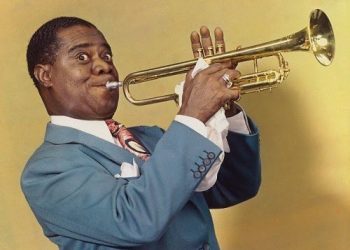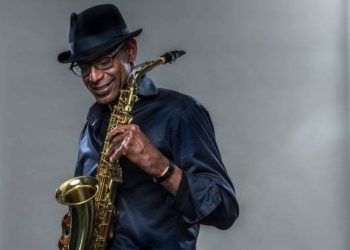Few instruments possess the raw emotion and expressive power of the saxophone. From its sultry whispers to its electrifying roars, this iconic instrument has defined countless musical genres and inspired generations of musicians. At the heart of its magic are the players—the virtuosos who breathe life into the saxophone, transforming it into an extension of their soul. These artists didn’t just master their craft; they revolutionized it, pushing boundaries and leaving an indelible mark on the world of music.
In this article, we’ll celebrate the top 15 saxophone players of all time, a pantheon of legends who redefined what the saxophone could achieve. From the golden age of jazz to modern experimental sounds, these musicians have shaped the soundtracks of our lives, influencing everything from blues and rock to funk and classical. Whether you’re a seasoned sax fan or a curious newcomer, prepare to be amazed as we explore the brilliance, creativity, and passion of these extraordinary artists.
Get ready to dive into a world where every note tells a story, every solo ignites the soul, and every player leaves a legacy. Let’s honor the giants who made the saxophone an unstoppable force in music history!
1. Charlie Parker
Charlie “Bird” Parker wasn’t just a saxophonist; he was a groundbreaking force in the development of jazz. Widely regarded as one of the principal architects of bebop, Parker revolutionized the way music was approached, both through his lightning-fast improvisation and his complex harmonic ideas. His musical vocabulary expanded the very definition of jazz and set a new standard for improvisers. His mastery of the alto saxophone was profound, as he introduced techniques like rapid chord changes, intricate melodic lines, and harmonically advanced scales. His compositions, including classics like “Ornithology” and “Ko-Ko”, exemplify his inventiveness and ability to push the limits of what jazz could be. Parker’s playing was not only about virtuosity; it was also deeply expressive, filled with emotion and a sense of urgency that made every note feel alive. His ability to make the saxophone sing with a voice that was both uniquely his own and rooted in the jazz tradition was transformative. His influence can be seen in generations of musicians who sought to emulate his creativity, agility, and passionate approach to improvisation. The way Parker approached music was entirely revolutionary, introducing a new lexicon for jazz that would become the foundation for countless artists in the decades that followed. His contribution to jazz is immeasurable, and his work continues to inspire musicians across all genres, proving that Charlie Parker’s legacy is not only rooted in jazz history but in the way that modern music continues to evolve.
2. John Coltrane
John Coltrane was a visionary whose work with the tenor saxophone elevated jazz to new heights of spirituality and technical mastery. His career, spanning from the 1950s to his untimely death in 1967, saw him explore a vast range of styles, from the hard bop of his early years to the modal jazz and free jazz innovations that would define his later career. His compositions like “Naima”, a tender ballad named after his first wife, and “A Love Supreme”, a four-part spiritual journey, showcase not only his technical virtuosity but also his deep, personal connection to the music. Coltrane’s influence goes far beyond his impeccable saxophone technique; it’s his spiritual quest and quest for transcendence through music that set him apart. “A Love Supreme”, in particular, is seen as one of the greatest jazz recordings ever, blending elements of modal jazz with religious themes and an intense, meditative quality that speaks to the depth of Coltrane’s inner life. His relentless drive to innovate and constantly expand his musical boundaries was matched only by his dedication to the craft of music itself. Coltrane’s improvisational style was complex, layering multiple ideas and creating a sense of movement and progression within his solos. His exploration of modes and scales opened the door for new possibilities in jazz, and his embrace of free jazz in the later part of his career showed his unwavering commitment to pushing jazz into uncharted territories. Coltrane’s legacy is not just in his revolutionary music, but in his ability to connect the spiritual with the musical, making his work resonate with listeners on a deep, almost metaphysical level.
3. Sonny Rollins
Sonny Rollins, often called the “Saxophone Colossus,” has had one of the most enduring and influential careers in jazz history. Known for his muscular tone and inventive improvisation, Rollins is a true giant of the saxophone, whose influence spans across decades. His album Saxophone Colossus remains a landmark in jazz history, and tracks like “St. Thomas”, with its infectious Caribbean-inspired melody, showcase his ability to seamlessly blend technical brilliance with deep, soulful expression. Rollins’ improvisational skill is unparalleled—his solos feel like stories being told in real time, full of twists and turns, with an almost narrative-like progression. He’s not just playing notes; he’s communicating, building tension, resolving it, and creating a musical conversation that feels spontaneous yet deeply considered. Rollins was also a master at taking traditional jazz forms and making them his own. His deep understanding of jazz history is evident in his approach to the standards of the genre, and yet his innovative spirit constantly reshaped these pieces, taking them in new directions. Beyond his exceptional technical prowess, Rollins’ ability to evoke emotion through his music has made him one of the most respected figures in jazz. His distinctive sound—rich, warm, and assertive—has become instantly recognizable to any jazz fan, and his approach to improvisation has influenced generations of saxophonists and jazz musicians across the world. Even as Rollins enters his 90s, he remains an active and revered figure in the jazz community, proving that his musical voice is as strong and vital as ever.
4. Stan Getz
Stan Getz, known as “The Sound,” was one of the most beloved and influential tenor saxophonists of the 20th century. Getz’s playing was characterized by its smooth, lyrical quality, which made his tone one of the most recognizable in jazz. His velvety sound captivated audiences worldwide, and his collaborations with Brazilian musicians João Gilberto and Antônio Carlos Jobim helped bring the bossa nova genre into the American mainstream. Songs like “The Girl from Ipanema” became instant classics, thanks to Getz’s ability to weave through complex melodies with ease, creating an elegant and seamless performance that felt both intimate and expansive. While Getz’s association with bossa nova was a defining aspect of his career, his range extended far beyond that genre. He was equally at home playing the complex harmonies of cool jazz, improvising freely on standards, or delivering heartfelt ballads with emotional depth. Getz had a unique gift for making every note seem effortlessly beautiful, with a balance of subtlety and expression that made his solos seem to breathe with life. His music spoke to the human experience in ways that were both sophisticated and accessible, bridging gaps between jazz purists and mainstream audiences. His influence on both jazz and popular music cannot be overstated—his recordings have remained iconic for decades, and his style continues to be a touchstone for saxophonists who seek to capture the emotional and technical depth that Getz mastered. His legacy endures in the smooth elegance of his sound, the emotional warmth of his performances, and the timeless beauty of his best-known recordings.
5. Lester Young
Lester Young, known affectionately as “Prez” by Billie Holiday, was a pioneering saxophonist whose cool, smooth tone and innovative phrasing left a lasting mark on jazz. Playing primarily in the swing era, Young revolutionized the tenor saxophone with his relaxed, laid-back playing style that contrasted sharply with the more forceful and aggressive approach of his contemporaries. His fluid, melodic lines were a hallmark of his sound, bringing a sense of ease and natural flow to his improvisations. Young’s solos, like those featured on “Lester Leaps In”, exemplify his unique ability to craft melodies that seemed to glide effortlessly over the rhythm section, adding a sense of freedom and relaxation to the jazz idiom. His influence on later saxophonists, including Stan Getz and John Coltrane, is undeniable—Young’s relaxed phrasing and approach to improvisation served as a template for future generations of jazz musicians. His musical vocabulary was rich and expansive, yet his playing was never cluttered or overbearing; instead, Young’s improvisations felt airy and light, often full of unexpected twists and turns that kept the listener engaged. Beyond his technical prowess, it was Young’s ability to express the emotional depth of the music that set him apart. His lyrical style was a precursor to the more emotional, expressive playing of later jazz greats. In his collaborations with the Count Basie Orchestra and his solo work, Young left behind a body of music that remains a touchstone for saxophonists and jazz musicians to this day. His innovative phrasing, harmonic creativity, and melodic inventiveness continue to inspire and shape the language of jazz.
6. Cannonball Adderley
Cannonball Adderley was an alto saxophonist whose soulful, exuberant playing bridged the worlds of bebop and soul jazz. His sound, filled with warmth and infectious energy, made him one of the most beloved figures in the jazz world. Adderley’s playing was rooted in the blues, and he effortlessly blended the complexity of bebop with the raw, emotional expression of R&B and gospel. His work with Miles Davis on the iconic album Kind of Blue is a testament to his virtuosity, as his energetic improvisation on tracks like “Freddie Freeloader” added a distinct spark to Davis’ legendary modal sound. But Adderley’s solo career is where his personality truly shone. Songs like “Mercy, Mercy, Mercy” from his album of the same name became instant jazz standards, showcasing his skill at crafting melodic, catchy lines that still maintained the depth and complexity of jazz. His improvisations had a joyous, almost conversational quality, engaging the listener while maintaining a sense of spontaneity. Cannonball’s tone was vibrant and full of life, and his infectious enthusiasm for music made him a favorite among both fellow musicians and audiences alike. His influence extended far beyond jazz, as his fusion of gospel, R&B, and jazz made his music accessible to a wider audience. He remains one of the most important and influential saxophonists in the history of jazz, and his legacy lives on in the soulful, blues-inflected style that continues to inspire musicians today.
7. Dexter Gordon
Dexter Gordon was one of the first tenor saxophonists to embrace bebop, and his rich, resonant sound helped shape the sound of modern jazz. Known for his towering presence both physically and musically, Gordon was a pioneer who helped establish the tenor saxophone as a major voice in jazz. His recordings, such as Go! and Our Man in Paris, are revered as classic examples of bebop and post-bop, featuring his powerful, lyrical improvisations and his commanding sense of swing. Gordon’s style was defined by his deep, warm tone and his ability to phrase with an almost conversational quality, stretching the limits of time and rhythm to create a sense of freedom in his solos. His solos were thoughtful and deliberate, often filled with surprising harmonic choices that added emotional weight to his lines. Unlike many of his bebop contemporaries who embraced rapid-fire, virtuosic improvisation, Gordon’s approach was measured, focusing more on the emotional depth of his phrases rather than speed. This made his playing feel more accessible to a wide range of listeners, from hardcore jazz fans to casual listeners. His playing was grounded in a deep understanding of jazz history, but his style was all his own, and it resonated with both his peers and the public. As one of the early saxophone giants, Gordon’s influence on the next generation of jazz musicians was immense, and his impact can still be heard in the work of contemporary saxophonists who continue to draw from his legacy of swing, soul, and thoughtful improvisation.
8. Ornette Coleman
Ornette Coleman was a true innovator whose work on the alto saxophone transformed jazz and music as a whole. As the leader of the free jazz movement, Coleman’s approach to improvisation was unlike anything that had come before him. His revolutionary style sought to break free from the confines of traditional harmony and rhythm, embracing a more liberated form of musical expression. His 1959 album The Shape of Jazz to Come is widely regarded as one of the most important recordings in jazz history, and tracks like “Lonely Woman” demonstrated his ability to create emotionally charged melodies without adhering to conventional harmonic structures. Coleman’s music was raw and visceral, unafraid to explore dissonance, chaos, and unconventional ideas. His alto saxophone sound was jagged and intense, yet it had a lyrical quality that spoke directly to the listener’s emotions. Coleman’s improvisations were based on collective interaction and spontaneity, with each performance creating a unique musical landscape. His ability to communicate through his saxophone, even when the music seemed to challenge traditional norms, made him one of the most important figures in 20th-century music. His later work with his trio on Free Jazz cemented his status as one of the most forward-thinking and radical voices in jazz. While not universally accepted at the time, Coleman’s contributions to jazz and his ability to stretch the boundaries of what music could be has made him one of the most influential and celebrated musicians in jazz history. His legacy continues to inspire those who seek to explore the uncharted territories of sound.
9. Wayne Shorter
Wayne Shorter is one of the most innovative and influential saxophonists of the modern jazz era. A master of both composition and improvisation, Shorter’s contributions to jazz have been monumental. Whether as a member of Miles Davis’ Second Great Quintet or as a founding member of the groundbreaking jazz fusion group Weather Report, Shorter’s work transcends genre and continues to be a defining force in jazz. His compositions, such as “Footprints” and “Witch Hunt”, have become jazz standards, celebrated for their complex structures and intricate melodic lines. Shorter’s saxophone playing is deeply personal—his sound is rich and textured, with an expressive, almost spiritual quality that resonates with listeners. His improvisations often convey a sense of searching, as if each note is part of an ongoing journey of discovery. As a composer, Shorter was known for pushing the boundaries of form, incorporating unusual harmonic structures and rhythmic patterns that created new possibilities within jazz. His time with Davis, particularly in albums like E.S.P. and Nefertiti, was marked by his innovative approach to harmony and his deep understanding of jazz as a living, breathing form of expression. Whether playing soprano or tenor saxophone, Shorter’s technical brilliance and adventurous spirit make him one of the defining saxophonists of the modern era. His legacy is one of exploration—of sound, of harmony, and of jazz itself—and he continues to inspire generations of musicians to seek out new musical horizons.
10. Coleman Hawkins
Coleman Hawkins, often referred to as the “Father of the Tenor Saxophone,” was one of the first musicians to fully harness the instrument’s potential within the jazz genre. Hawkins revolutionized the way the saxophone was played, bringing a depth and resonance to the instrument that had never been heard before. His 1939 recording of “Body and Soul” remains one of the most iconic moments in jazz history, showcasing his mastery of improvisation and his ability to craft deeply expressive solos. Hawkins’ tone was rich and robust, with a vibrato that gave his playing a sense of gravity and emotional weight. He was a master at navigating harmonic changes, and his improvisations were built on a foundation of deep musical knowledge and technical skill. While Hawkins’ early career was rooted in the swing era, he was not content to rest on his laurels. As jazz evolved, Hawkins continued to innovate, adapting his style to the changing landscape of the music. His work in the bebop era was crucial in bridging the gap between the swing era and the more complex developments of modern jazz. His influence on later saxophonists, particularly those who came up in the bebop and hard bop eras, was profound. Hawkins’ contributions to jazz can’t be overstated—he was one of the first to establish the saxophone as a lead instrument in jazz, and his innovative harmonic approach set the standard for generations of musicians. His legacy continues to be felt today, as his work remains a touchstone for jazz saxophonists who seek to balance technical mastery with emotional expression.
11. Michael Brecker
Michael Brecker was one of the most influential saxophonists of the modern jazz era, known for his incredible technical prowess and versatility. Whether playing in jazz, fusion, or rock contexts, Brecker’s sound was unmistakable—powerful, clean, and sharp. His skill on both the tenor and soprano saxophones pushed the boundaries of what was possible on the instrument. Brecker was also known for his use of advanced technology, such as the EWI (Electronic Wind Instrument), to expand the sonic palette of the saxophone. His solos were virtuosic, fast-paced, and intensely melodic, often blending rapid-fire bebop lines with more modern harmonic concepts. Brecker’s ability to express emotion while maintaining technical brilliance made him a standout performer. Albums like Pilgrimage highlight his emotional depth, with tracks that span the full spectrum of human experience—from the introspective to the explosive. His collaborations with jazz legends such as Herbie Hancock, Pat Metheny, and his own Brecker Brothers Band cemented his reputation as one of the most versatile and innovative saxophonists of his generation. Brecker was a key figure in the fusion movement of the 1970s and 1980s, blending jazz with rock, funk, and world music in groundbreaking ways. His compositions were often complex, yet accessible, and his improvisations had an angular, almost futuristic quality. Brecker’s impact on the saxophone can’t be overstated—he elevated the instrument to new heights, inspiring countless musicians to experiment with new techniques and sounds. His legacy lives on through his recordings, his technical innovations, and the many musicians who continue to follow in his footsteps.
12. Gerry Mulligan
Gerry Mulligan was one of the most innovative baritone saxophonists in jazz history, known for his light, lyrical touch on an instrument traditionally associated with heaviness. Mulligan’s contributions to the cool jazz movement in the 1950s helped shape the genre, and his collaborations with other jazz greats such as Chet Baker and Miles Davis produced some of the most enduring recordings in jazz. His sound was distinct—smooth, melodic, and conversational—qualities that made him stand out in the cool jazz scene. Mulligan’s playing was defined by his ability to create elegant, flowing lines that felt effortlessly smooth, even when navigating complex harmonic changes. His work on albums like “My Funny Valentine” (with Chet Baker) and “Birth of the Cool” (with Miles Davis) exemplifies his gift for melodic improvisation and his ability to blend effortlessly with other musicians. Mulligan was also a gifted composer and arranger, and his innovative contributions to jazz orchestration, particularly in the context of small groups, helped redefine the sound of the cool jazz era. As a bandleader, Mulligan’s compositions often pushed the boundaries of form, with intricate harmonic structures and unusual time signatures that became a hallmark of his style. While Mulligan’s approach was less fiery than some of his contemporaries, his ability to inject warmth and lyricism into his playing made his music deeply expressive. His influence on the development of jazz as an art form is immeasurable, and his legacy continues to resonate in the music of today’s saxophonists, many of whom strive to emulate his smooth, sophisticated style.
13. Grover Washington Jr.
Grover Washington Jr. was a pioneering saxophonist whose unique blend of jazz, R&B, and funk made him one of the most influential figures in the smooth jazz genre. With his soulful playing, Washington bridged the gap between jazz and mainstream pop music, creating a style that resonated with a wide range of listeners. His work on albums like Winelight and hits like “Just the Two of Us” (featuring Bill Withers) brought the saxophone to a broader audience, making it a mainstay of smooth jazz radio stations and adult contemporary playlists. Washington’s tone was warm and inviting, often smooth and mellow but with enough bite to give it a sense of urgency. His improvisations, though rooted in jazz, were often infused with elements of soul and R&B, giving them a grounded, emotional quality that resonated with listeners. Tracks like “Mr. Magic” became jazz standards in their own right, blending funky grooves with intricate melodies, and demonstrating Washington’s ability to balance technical prowess with heartfelt expression. His distinct sound was the perfect backdrop for a generation of jazz listeners looking for something more accessible, yet still musically sophisticated. Washington was also a gifted composer, and his ability to craft catchy, memorable hooks while maintaining a strong sense of jazz harmony was one of the hallmarks of his style. His success in the mainstream pop world helped pave the way for future generations of smooth jazz artists, and his influence can still be heard in the work of saxophonists today.
14. Phil Woods
Phil Woods was one of the premier alto saxophonists of the bebop era, celebrated for his fiery improvisational style and deep emotional expressiveness. A disciple of Charlie Parker, Woods carried the bebop torch with passion and precision, leaving a lasting imprint on jazz history. His virtuosic playing, which combined rapid-fire bebop lines with a distinctive sense of lyricism, made him one of the most respected saxophonists of his generation. Woods was a frequent collaborator with other jazz luminaries, including Quincy Jones, Thelonious Monk, and Billy Joel, who featured Woods on his hit song “Just the Way You Are.” As a bandleader, Woods’ albums like Musique du Bois showcase his technical brilliance and his ability to weave complex harmonic structures into emotionally resonant solos. His playing was marked by a rich, warm tone, and he had a knack for blending technical complexity with accessibility, making his music both intellectually engaging and emotionally compelling. Woods was also a gifted educator, passing on his knowledge and passion for jazz to the next generation of musicians. His contributions to the world of jazz and his ability to honor the bebop tradition while adding his own voice to it ensured his place among the saxophone greats. His influence on jazz can be heard in the playing of countless saxophonists who have followed in his footsteps, many of whom strive to capture the same balance of technical brilliance and emotional depth that Woods so effortlessly displayed throughout his career.
15. David Sanborn
David Sanborn is one of the most recognizable saxophonists of the contemporary era, known for his unique fusion of jazz, pop, and R&B. With a signature sound that blends smooth, soulful phrasing with jazz improvisation, Sanborn has become a household name. His expressive, gritty tone on the alto saxophone has made him a standout in the world of smooth jazz, and his collaborations with artists from various genres, including Paul Simon, Eric Clapton, and Stevie Nicks, have further solidified his place as a musical icon. Sanborn’s albums, like Hideaway and Straight to the Heart, showcase his ability to seamlessly blend jazz with pop sensibilities, creating music that is both accessible and artistically complex. His improvisational approach, often rooted in the blues, gives his playing a raw emotional depth, while his technical skill allows him to navigate complex harmonic structures with ease. Sanborn’s work in the 1980s helped define the sound of smooth jazz, and his ability to cross over into pop and R&B brought jazz saxophone to a wider audience. Throughout his career, Sanborn has consistently pushed the boundaries of the saxophone, experimenting with different textures and tones to create a sound that is entirely his own. His legacy is one of innovation, and he continues to influence musicians today, particularly those looking to blend genres and push the boundaries of jazz while maintaining its emotional depth and authenticity.










